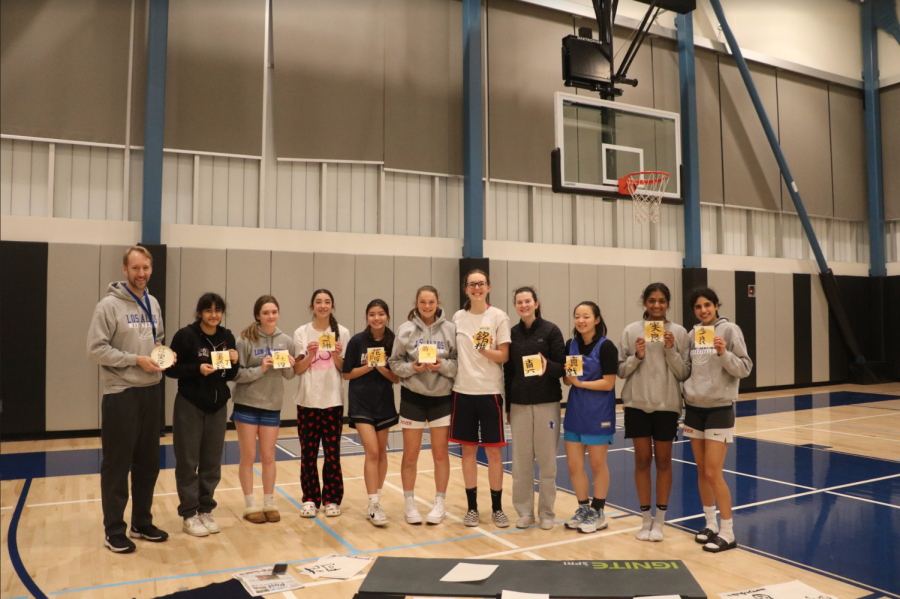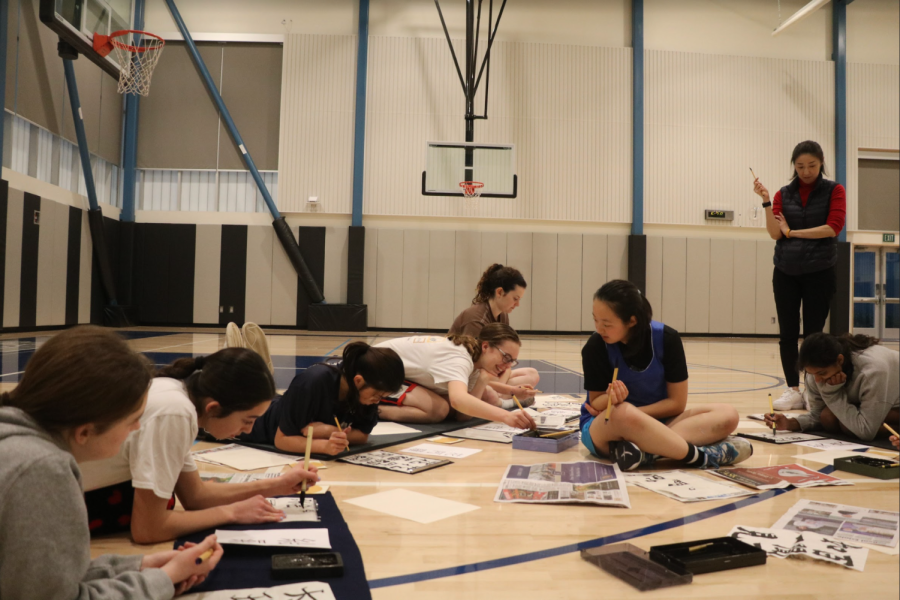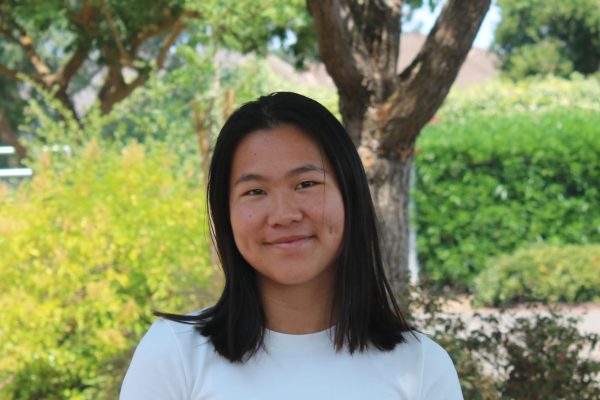Chihiro Niki: connecting calligraphy, culture and composure
The varsity girls basketball team poses with their artwork after practicing Japanese calligraphy after practice. This team bonding activity was hosted by junior Chihiro Niki and her mom, Chiharu Niki.
High school students’ lives are filled with stress. Sometimes, everyone needs to take a moment to relax and bask in the pleasures of the present.
That precisely was Chihiro Niki’s goal.
As the varsity girls basketball team gathered for one of their last practices of this season, a fun activity awaited them in the second half – Japanese calligraphy organized by Chihiro.
“Calligraphy is like a type of meditation,” Chihiro said. “And I think our team is overall very stressed, with basketball and school and everything else, so I thought this would be a fun and relaxing activity.”
Chihiro grew up in Tokyo, Japan and moved to the United States four and a half years ago. The Japanese calligraphy she’s learned since kindergarten allows her to connect with her culture even when halfway across the world.
“When my family immigrated here, calligraphy was like my only direct way of keeping all culture instead of assimilating entirely [in American culture],” Chihiro said. “It’s a good way of preserving my Japanese-ness when I’m kind of Americanized now.”
The Saturday evening practice started as usual as the team practiced drills and ran plays, but about halfway through, the coach turned the team’s attention to an arrangement of paper, ink and brushes set up in the back corner of the gym.
While Chihiro began to explain the importance of meditation and traditional Japanese calligraphy, the entire team, including the coach, kneeled on the ground in a circle, which is a traditional and formal way of seating in Japan.
Each player received printed text of their names written phonetically in Japanese characters, which was what they would practice writing. Using dark ink and special calligraphy brushes, the players were then given the chance to practice writing their names before taking a final shot on special calligraphy paper.
Though the activity was mainly to Chihiro’s plan, Chiharu Niki, Chihiro’s mom, stepped in to help as well, helping teach the players to write the characters and showing them different brush strokes and methods to use.
“When Chihiro asked me for help, I was happy to,” Niki said. “I mainly helped her come up with Japanese names for the players and brought out all the special supplies.”
This was a continuation of different team bonding activities held after practice hosted by the players. In the past, the team has also played kickball, yoga and martial arts, as well as held a cookie decorating contest and Secret Santa gift exchange.
“We’re a strong team both on and off the court since we’re willing to help each other out and communicate our needs,” Chihiro said. “And team bonding allows us to hang out as not just teammates, but as friends.”
To both Chihiro and Chiharu Niki, Japanese calligraphy is a connection to the culture of their homeland and a reminder to focus on the present.
“When I do calligraphy, I get the opportunity to just think and concentrate on nothing but the product of what I’m working on,” Niki said. “It’s definitely something that everyone should try.”
Educational, relaxing and fun-filled, Chihiro’s activity was enjoyed by the players and coach, creating new and long-lasting memories for the team.
“I really thank Chihiro for bringing this to us,” head coach Erik Stuart said. “It was such a wonderful experience that the team couldn’t have done anywhere else.”





